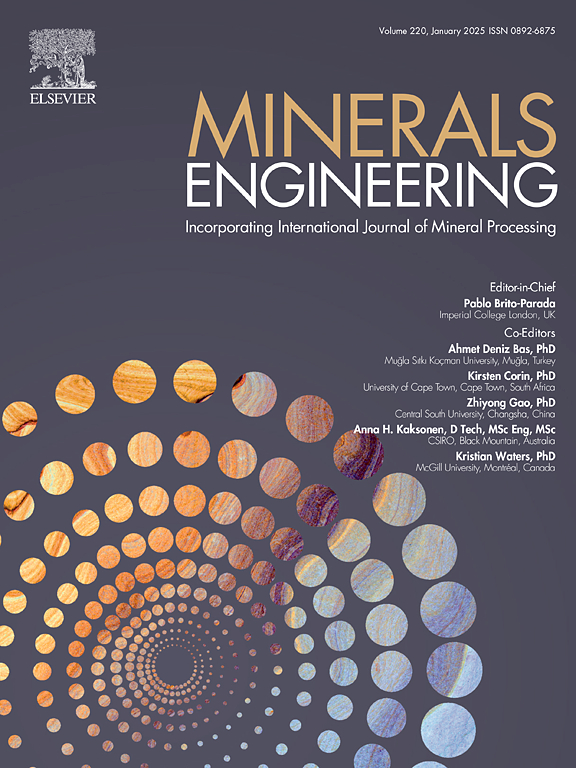The efficient separation of apatite and dolomite using sodium dextran sulphate as an eco-friendly depressant: Flotation performances and atom-scale interaction mechanism
IF 4.9
2区 工程技术
Q1 ENGINEERING, CHEMICAL
引用次数: 0
Abstract
The upgrading of Apa (Apatite) from Dol (Dolomite) by flotation is an extremely challenging job because of their resembling surface characteristics and the inferior selectivity of conventional fatty acid. In this work, an eco-friendly polymer surfactant dextran sulfate sodium (DSS) was evaluated as a novel Dol inhibitor to separate Dol and Apa and the selective depression mechanism was unveiled from atom-scale prospective. The results proved that DSS selectively depressed Dol while scarcely influenced the flotation of Apa. The wettability and zeta potential results suggested that DSS preferred to adsorb on Dol than Apa, which impeded NaOL (sodium oleate) to interact with Dol and made its surface hydrophilic. X-ray photoelectron spectroscopy (XPS) results confirmed that the intense chelation of −OSO32- groups with both Ca2+ and Mg2+ sites on Dol surface. While DSS species physiosorbed on Apa and they were easy to be replaced by NaOL. DFT calculation suggested that the 2p orbital of O1, O2 and O3 atoms within −OSO32- groups bonded with Mg 3s and Ca 4s orbital orbitals to form ionic −O-Ca, −O-Mg bonds, respectively. While only small portion of −OSO32- groups within DSS adsorbed on Ca sites weakly through electrical interaction because of the steric hindrance effect and the difference in atoms distribution density. As an eco-friendly surfactant, DSS shows good selectivity and compatibility in conjunction with NaOL via direct flotation, which has good prospects to substitute conventional reverse flotation to simplify the flotation processes and lower the flotation cost.
求助全文
约1分钟内获得全文
求助全文
来源期刊

Minerals Engineering
工程技术-工程:化工
CiteScore
8.70
自引率
18.80%
发文量
519
审稿时长
81 days
期刊介绍:
The purpose of the journal is to provide for the rapid publication of topical papers featuring the latest developments in the allied fields of mineral processing and extractive metallurgy. Its wide ranging coverage of research and practical (operating) topics includes physical separation methods, such as comminution, flotation concentration and dewatering, chemical methods such as bio-, hydro-, and electro-metallurgy, analytical techniques, process control, simulation and instrumentation, and mineralogical aspects of processing. Environmental issues, particularly those pertaining to sustainable development, will also be strongly covered.
 求助内容:
求助内容: 应助结果提醒方式:
应助结果提醒方式:


